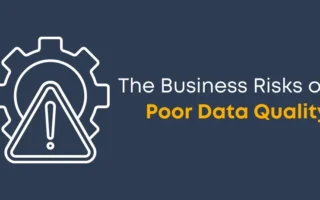Customer feedback is a report card from your customers about your product or service. Do they think it’s good? Did it live up to their expectations, or was it a letdown? Every rating, review, or little comment shows you what people think about your company.
Is this important? Totally! Each bit of feedback is full of stuff you can use to enhance your product, sort out service problems, and make your brand better.
Say you get a new laptop. You’re stoked, right? You expect great stuff. But after a few days, the battery dies super quickly. Annoyed, you write a review online. That review is now part of the customer feedback. Companies can use this info to tweak things, get better, and build trust with people who might buy from them later.
That’s why getting feedback isn’t just some side thing—it’s super important for how customers experience your business. When companies collect, look at, and do something with feedback, it makes a great thing happen: Feedback causes boosts. Boosts cause happier people. Happier people stick around and say good things. Then you grow! Modern tools like Sprinklr make this process even smoother by analyzing feedback in real-time and helping businesses act quickly on what customers are really saying.
Types of Customer Feedback
Customer feedback doesn’t look the same every time. It shows up in many forms, and each form gives unique insights. Businesses that learn how to spot and use these properly can boost revenue, loyalty, and reputation.
Here are the 5 most important types:
Direct Feedback
This comes straight from the customer—through surveys, reviews, support tickets, or face-to-face chats. It’s super valuable because customers are telling you what’s on their mind.
Indirect Feedback
This one isn’t told to you directly. It’s what people say about your brand on social media, forums, YouTube comments, or blogs. Keeping an eye here gives you the raw, unfiltered truth about your brand image.
Inferred Feedback
This comes from observing customer behavior. For example, did they abandon the cart? Did they only spend 10 seconds on your page? Or are they logging in daily like clockwork? Data like bounce rates, app usage, and time spent show what they feel without them saying it.
Positive Feedback
These are compliments, testimonials, and recommendations. They highlight what you’re already doing right, plus they’re great for marketing. Also, it keeps employees motivated—always nice to get some love!
Negative Feedback
This one often scares businesses, but it’s a goldmine. Negative comments directly show where you’re failing. And if handled well, they can help turn unhappy customers into loyal ones.
Remember, these categories often overlap. For example, indirect feedback could be positive or negative. And sometimes inferred behavior eventually leads to direct feedback. If you are a company that wants to start gathering end-to-end customer feedback, check out the best customer feedback management tools in 2025.
How to Collect Customer Feedback: 5 Best Practices
Getting feedback isn’t just about shooting random surveys—it’s about asking the right questions, in the right way.
Here’s how to do it better:
Make It Easy
If the process is quick and simple, more people will respond. Keep surveys short and mobile-friendly. Use star ratings, thumbs up/down, or emojis. For example, after a chatbot interaction, a simple “How was your experience?” with happy/neutral/sad faces works great.
Use Multiple Channels
Not everyone likes the same method. Some answer email surveys, others prefer in-app popups, SMS, or even social media polls. Mixing up the channels helps you get feedback from different kinds of customers.
Ask at the Right Time
Timing is everything. Right after a purchase, customers are usually happiest—the perfect time to ask for feedback. On the other hand, if someone abandons a cart, asking why can reveal hidden issues like price concerns or site usability problems.
Offer Rewards
Sometimes, people need a little push. Small rewards like discounts, loyalty points, or even donating to charity in their name can increase participation. It also shows customers you value their time.
Mix Numbers with Words
Quantitative data (like CSAT or NPS scores) tells you the “what,” but qualitative feedback (like open-ended answers, interviews, or focus groups) tells you the “why.” Combine both for a complete picture.
When paired with a strong CX strategy, these practices don’t just collect feedback—they transform it into actionable steps that improve customer experience and long-term business growth.
Conclusion
Customer feedback ain’t just about collecting random opinions here and there. It’s more like actually listening to people and then, you know, doing something about it. Every review, rating, or even a small complaint kinda points you in a direction—like telling you what’s working and what’s not.
When you take feedback seriously and use it to grow, you end up making your product or service better. Plus, it builds trust, gives you more loyal customers, and makes your brand look stronger. The smart businesses already know this—feedback never really stops. The more you pay attention to it, the better experience your customers get. And honestly, that’s the stuff that keeps a business winning for the long run.




